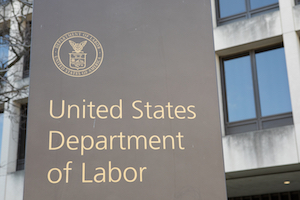The Department of Labor (DOL) announced a final rule on Jan. 9 that it says will help employers and workers better understand when a worker qualifies as an employee and when they may be considered independent contractors. It will take effect on March 11, 2024.
The rule provides guidance under the Fair Labor Standards Act on the proper classification of workers. It seeks to combat “employee misclassification,” which the DOL said is “a serious problem that impacts workers’ rights to minimum wage and overtime pay, facilitates wage theft, allows some employers to undercut their law-abiding competition, and hurts the economy at large.”
“Misclassifying employees as independent contractors is a serious issue that deprives workers of basic rights and protections,” Acting Secretary of Labor Julie Su said in a statement. “This rule will help protect workers, especially those facing the greatest risk of exploitation, by making sure they are classified properly and that they receive the wages they’ve earned.”
The guidance “aligns with longstanding judicial precedent” on which employers have previously relied to determine a worker’s status as an employee or independent contractor.
"This new rule restores the pre-2021 multifactor analysis used by courts for decades and means that all relevant factors are analyzed to determine whether a worker is an employee or an independent contractor," American Retirement Association Chief Legal Officer Allison Wielobob explained. "In other words, it takes the analysis of the question back to a totality-of-the-circumstances economic reality test, where no single factor or group of factors gets predetermined weight."
It considers six factors (instead of five) that guide the analysis of a worker's relationship with an employer, including:
Any opportunity for profit or loss a worker might have,
- The financial stake and nature of any resources a worker has invested in the work,
- The degree of permanence of the work relationship,
- The degree of control an employer has over the person’s work,
- Whether the work the person does is essential to the employer’s business and
- A factor regarding the worker’s skill and initiative.
"Unlike the 2021 rule, it does not categorically weigh certain factors more than others," Wielobob added. "After considering more than 55,000 comments, the department landed on this approach believing it will reduce the risk that employees are misclassified as independent contractors, while at the same time providing greater consistency for businesses that engage with individuals who are in business for themselves."
In crafting the new rule, the department’s Wage and Hour Division considered feedback provided by stakeholders at forums in the summer of 2022 and during the comment period after the proposal’s announcement in October 2022.
- Log in to post comments
